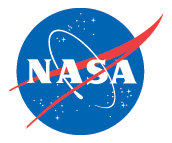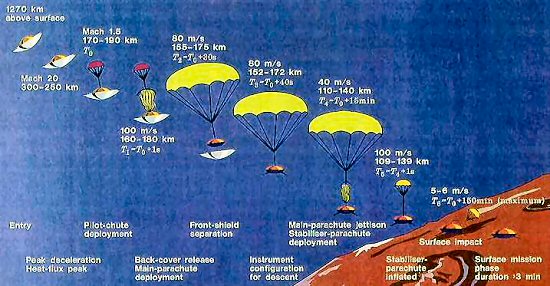


The Huygens probe entry is like a complicated choreographed dance routine - multiple experiments are running simulataneously, carefully planned so as not to interfere with one another and to obtain the maximum amount of useful data. (Click here for an enlarged and easily printable descent graphic.)

Huygens is programmed to land in the Southern Hemisphere of Titan.The probe descent will take somewhere between 2 to 2.5 hours. Scientists are not precisely sure how long the probe entry will take because they do not know exactly how thick Titan's atmosphere is. Due to this uncertainty, the mission timeline was planned to use 2.5 hours. However, Huygens has enough battery power to run for 3 hours so if it survives its landing, Huygens can take surface data for a brief period of time.
Below is a pictorial representation of the GCMS descent sequence timeline. It is read from bottom to top: the bottom (at time 0 minutes) represents the beginning of the descent, and the top (at time 150 minutes) represents when the probe will land on the surface. Each colored bar spans across the time (in minutes) when a particular experiment is running. Each bar is color-coded for easy experiment identification.

On the far left, there is a blue bar that spans from about 1 to 30 minutes. Examining the KEY, we find that blue represents Direct Leak 1. Thus, the graphic tells us that the GCMS opens up Direct Leak 1 after 1 minute and closes it after 30 minutes.